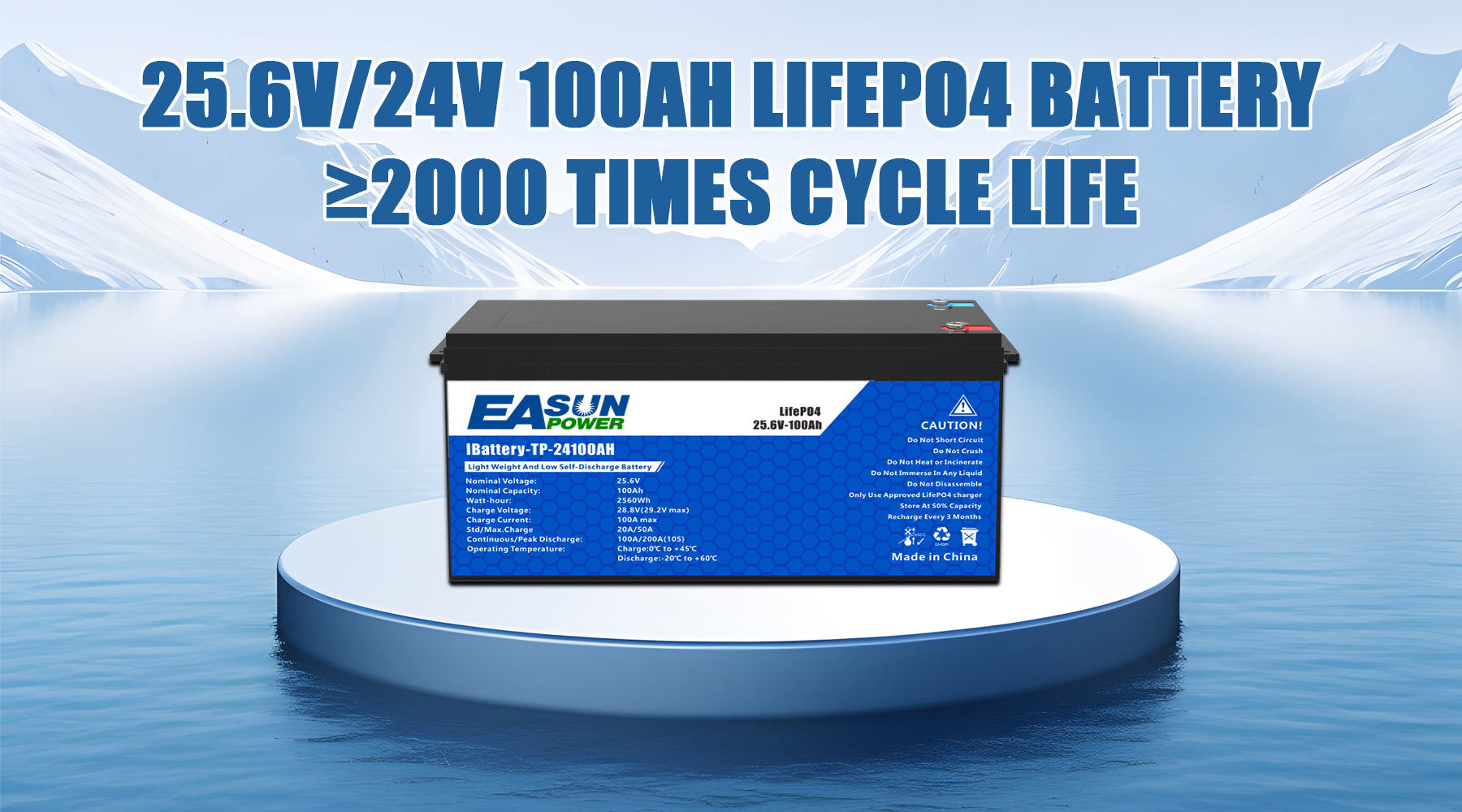
Lithium Batteries: 7 Ways to Save Battery Power
Easun Power Lifepo4 lithium batteries are becoming more and more common in daily life. What do you do if you have a problem? Now, check out these common problems and troubleshooting solutions!
- Capacity loss/insufficient capacity
Solution: Please place the battery in an environment of 25°C. After the battery is fully charged, discharge it to empty at a rate of 0.5C. Low temperature, excessive charge and discharge current, and the accuracy of the measuring instrument will all affect the test results.
Regular full battery charging can help maintain battery performance. If the battery is frequently only partially charged and discharged, it may result in a loss of capacity.
Note: "0.5C" refers to the current rate of the battery. For example, for a 100AH battery, the 0.5C current is 0.5*100=50A.
- Why my lithium battery is not charging?
(1) The charger may not match to the battery.
Solution: Please use lithium battery charger to charge and adjust the charging current to charge at 0.5C or below.
(2) The battery is in the BMS low-voltage protection state which means the output port is disconnected at this time.
Solution: Please activate the lithium battery before charging, or replace the charger (or solar controller) with activation function.
- Why my lithium battery can not discharge?
(1) The battery is in BMS protection status for the low voltage.
(2) High battery temperature triggers the BMS high temperature protection.
Solution: Please fully charge the battery before discharging, and ensure that the discharge conditions do not exceed the battery's allowable range.
- The battery cannot be charged to the maximum rated voltage.
(1) It may be that the charging voltage setting of the charger is incorrect or the charging voltage and battery type selection of the solar controller are incorrect.
(2) Trigger temperature protection or charge blocking protection. Once the battery reaches a certain voltage, charging will stop. This is to prevent overcharging.
(3) The consistency between cells within the battery decreases as the number of cycles increases. Charging to the maximum rated voltage may not be possible at this time. This is normal and does not affect battery function.
Solution: Please choose the correct charger, or set the charging voltage of the solar controller to a reasonable voltage. Also ensure that the charging rate does not exceed the allowable range of the battery, and keep the battery in an optimal temperature and ventilation environment.
- The battery cannot be discharged to the minimum rated voltage.
(1) High cut-off discharge voltage of the load may cause the battery to stop working when it is discharging.
(2) Trigger temperature protection or discharging over-current protection.
(3) The consistency between the cells inside the battery have declined with the increasing cycle times. At this time, it may not discharge to the maximum rated voltage. This is normal and will not affect the battery function.
Solution: Please check whether the cut-off voltage of the load device is reasonable and ensure that the discharge rate will not exceed the allowable range of the battery.
- The battery fully charges quickly and then drains quickly.
(1) The charging and discharging current exceeds the rated current.
(2) The battery capacity has decayed for the long time use.
Solution: Make sure that the charging and discharging current at the reasonable range of the battery, or replace it with a new one if the battery lifespan is closed to the maximum limit.
- The battery voltage exceeds the maximum rated voltage.
(1) When the solar system is fully charged, the battery voltage may reach the BMS protection voltage, and then the BMS will shut down. The voltage displayed by the controller is the voltage of the solar panel, not the battery voltage.
(2) When multiple batteries are connected in series, the BMS of one battery is in shutdown protection state. The voltage you measure at this time is not the true voltage of the battery.
Solution: Please disconnect the batteries in the battery pack and test them individually.
Easun Power is here
If you need additional help, please feel free to contact us.
